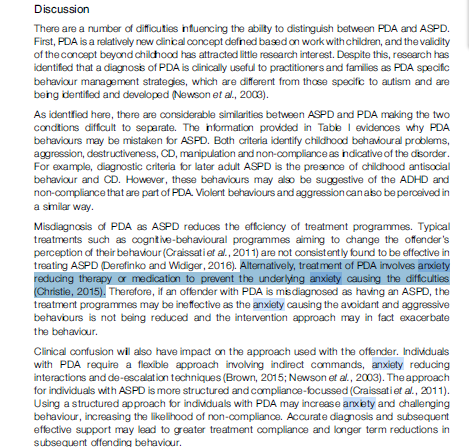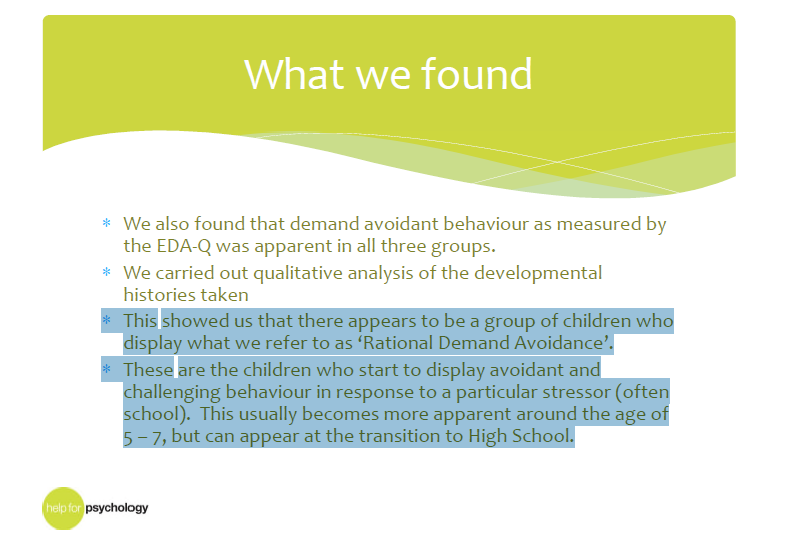I do not know if this is a blessing or a curse, having intrusive thoughts when I cannot sleep can sometimes lead to new observations on topics. One such occasion spawned this:
tandfonline.com/doi/full/10.10…
tandfonline.com/doi/full/10.10…
Later I will show how Help4Psychology definitions contradict aspects from the modern PDA literature.
Apologies in advance, I have loosely structured this, but it might still evolve rhizomatically.
The Help4Psychology PDA definitions
“Demand avoidance had been present since early infancy and presented across contexts and time.”
&
“Avoidance is pervasive and often seems illogical or perverse (e.g. the child may be unable to eat whilst hungry)”.
“Demand avoidance had been present since early infancy and presented across contexts and time.”
&
“Avoidance is pervasive and often seems illogical or perverse (e.g. the child may be unable to eat whilst hungry)”.
“Avoidance is not limited to a specific activity (or activities, e.g. school) or activities in a specific context.”
network.autism.org.uk/sites/default/…
network.autism.org.uk/sites/default/…
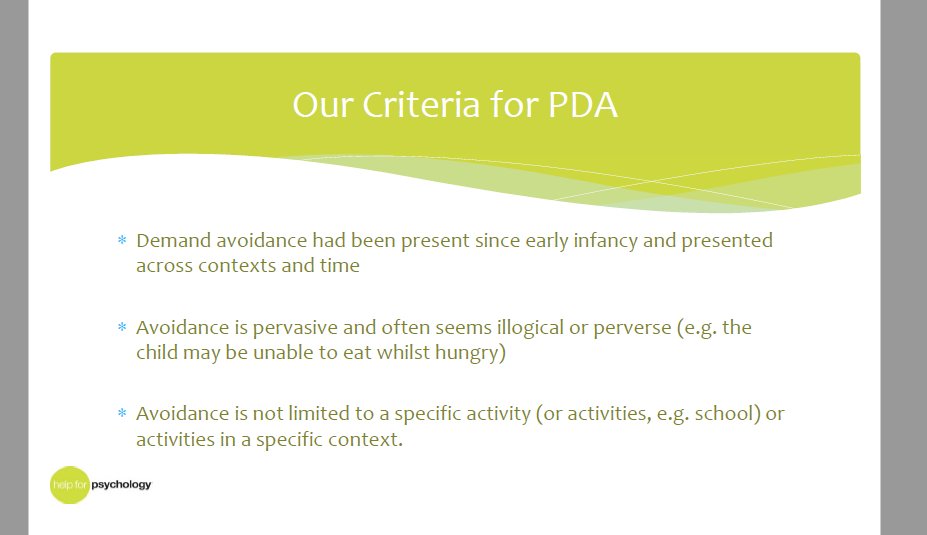
I have critiqued these a lot before, including how they suggest PDA is not autism:
…emandavoidancecom.files.wordpress.com/2020/07/19th-a…
&
Contradict understandings of autism subtypes:
…emandavoidancecom.files.wordpress.com/2020/07/11-jul…
…emandavoidancecom.files.wordpress.com/2020/07/19th-a…
&
Contradict understandings of autism subtypes:
…emandavoidancecom.files.wordpress.com/2020/07/11-jul…
Are arbitrary, as one cannot have a “Rational Demand Avoidance” group, if many of its members cannot rationalise their demand avoidance:
…emandavoidancecom.files.wordpress.com/2020/08/01-aug…
…emandavoidancecom.files.wordpress.com/2020/08/01-aug…
We haved away from behaviourist views of PDA to one of transactional interaction on the causes of such behaviours. See Fidler & Christie (2019).
kar.kent.ac.uk/62694/431/Natu…
&
thelancet.com/journals/lanch…

kar.kent.ac.uk/62694/431/Natu…
&
thelancet.com/journals/lanch…

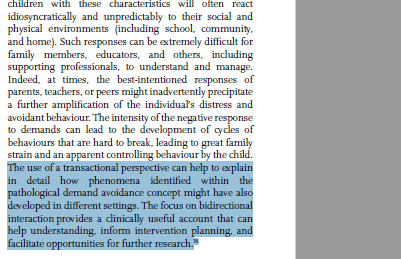
This is important because, Help4Psyschology justify their PDA definitions from the literature & their "extensive clinical knowledege", which as I will show is insufficient reasons to adopt their PDA definitions.
network.autism.org.uk/sites/default/…
network.autism.org.uk/sites/default/…
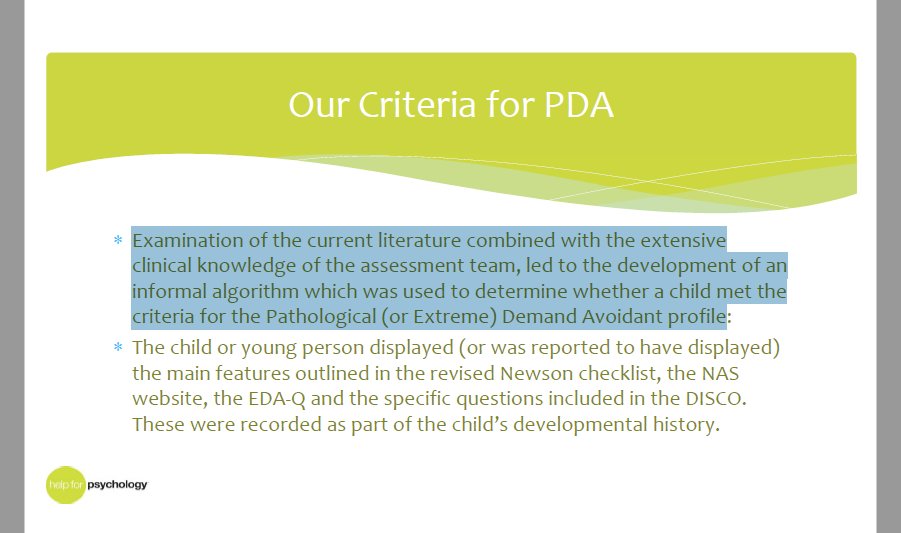
I will argue, that their PDA definitions are also not reflective of much of the literature, as some key points of early PDA understandings have been debunked in recent times. Which is my point about critiquing Newson & moving to transactional understandings.
Transactional understandings of PDA behaviours, are represented in the Matching the dials concept by Christie & Fidler; matching the demands on CYP with PDA, to their anxiety levels.
Also anxiety in autism, seems to be caused by aversive life experiences & interactions with the environment.
acamh.onlinelibrary.wiley.com/doi/full/10.11…
acamh.onlinelibrary.wiley.com/doi/full/10.11…
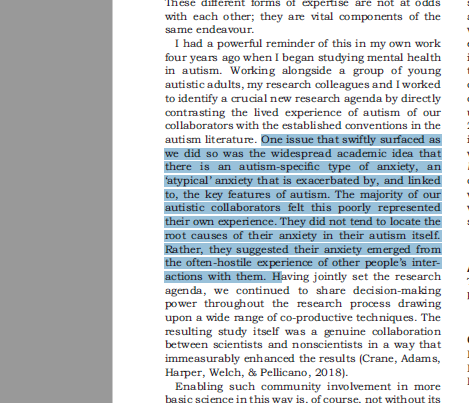
A key justification for PDA is that it is needed for specific strategies, that often focus on reducing anxiety.
That PDA behaviours often reduce as a CYP with PDA ages; 44% - 89% drop off rate in meeting clinical threshold. Replicated across at least 5 studies, using both PDA DISCO questions & EDA-Q:
acamh.onlinelibrary.wiley.com/doi/abs/10.111…
&
pdasociety.org.uk/wp-content/upl…
acamh.onlinelibrary.wiley.com/doi/abs/10.111…
&
pdasociety.org.uk/wp-content/upl…
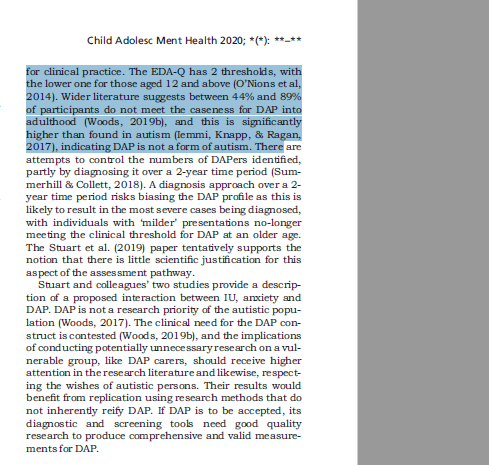
It suggests that if a CYP with PDA is expressing demand avoidance without a specific triggers, said person is not receiving appropriate support (including PDA strategies) & are experiencing aversive situations.
autisticmotherland.com/2018/05/23/pda/
autisticmotherland.com/2018/05/23/pda/

If a CYP are made so anxious by their experiences & recent situations they displaying demand avoidance without specific triggers 1) The demand avoidance is indicating presence of trauam. 2) That CYP is possibly being abused...
Bare in mind PDA behaviours, including demand avoidance and any without specific triggers reduce with age. Again suggesting such demand avoidance is not intrinsically routed in the individual.
I cover the majority of reasons, indicating PDA is a trauma/ distress response here:
…emandavoidancecom.files.wordpress.com/2020/08/06-aug…
…emandavoidancecom.files.wordpress.com/2020/08/06-aug…
This takes me my point about how Help4Psychology, clinical experience & opinions are insufficient to justify adopting their PDA definitions.
I accept that Judy Eaton has assessed around 2500 persons & probably 200 - 300 persons with PDA. Help4Psychology PDA database has 111 cases vs 150 of Newson.
network.autism.org.uk/sites/default/…
&
adc.bmj.com/content/88/7/5…

network.autism.org.uk/sites/default/…
&
adc.bmj.com/content/88/7/5…
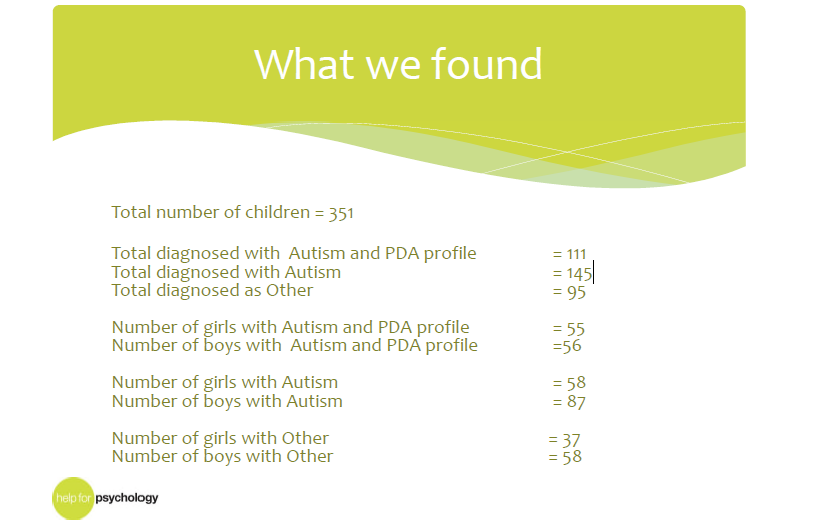
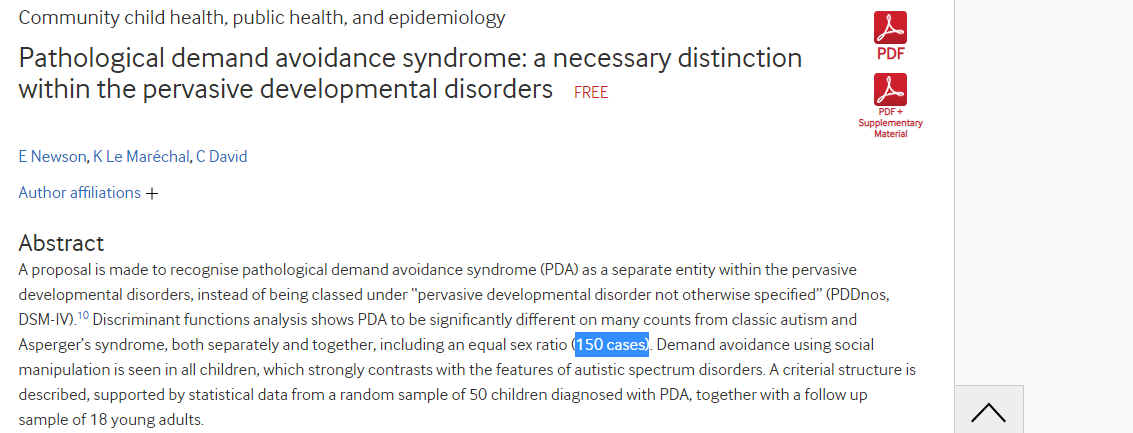
Judy Eatons PDA figure is substantial, it is potentially more than represented in the entire experience of 10 clinicians consulted for the EDA-Q.
acamh.onlinelibrary.wiley.com/doi/abs/10.111…
acamh.onlinelibrary.wiley.com/doi/abs/10.111…
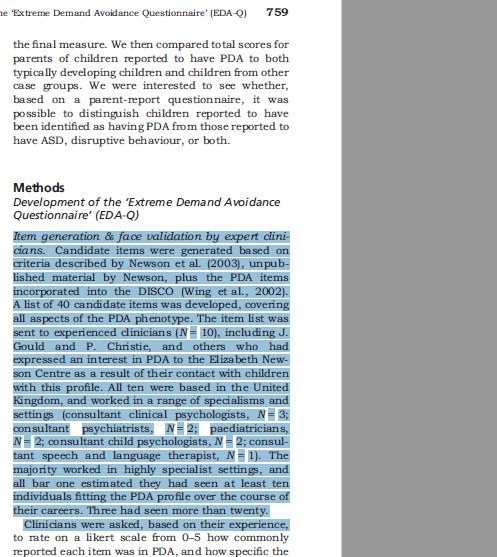
My concern here is that Help4Psychology, which is a multi-disciplinary team, including Judy Eaton have assessed hundreds of persons with PDA, with narrow stereotypical views of PDA. Their definitions seem to be narrower than Newson's.
Newson accepted that CYP can transition between autism subtypes, including INTO PDA. Also, that not all PDA diagnostic traits were required for a PDA diagnosis.
adc.bmj.com/content/archdi…

adc.bmj.com/content/archdi…

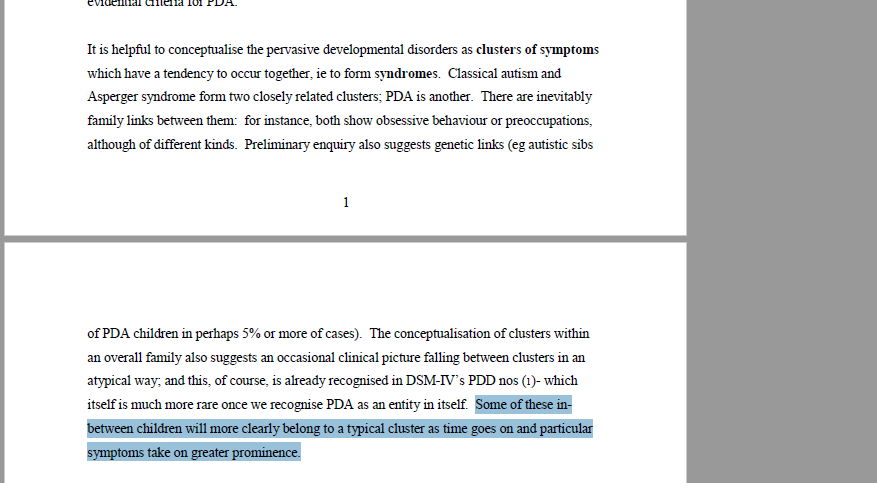
Bare in mind Newson saw a comparable amount of persons with PDA to Help4Pscyhology, & her database is larger than Help4Psychology one.
Help4Psychology PDA definitions mean that autistic persons cannot transition into PDA. They have a "Rational Demand Avoidance" group, where 5 - 7 year old autistic CYP start displaying PDA behaviour, often triggered by aversive school experiences.
Worth noting Newson, consistently took the approach that is something appears to benefit other stakeholders (often caregivers), it is worth doing. E.g. she created her own diagnostic grouping "Pervasive Developmental Coding Disorders"
autismeastmidlands.org.uk/wp-content/upl…
autismeastmidlands.org.uk/wp-content/upl…
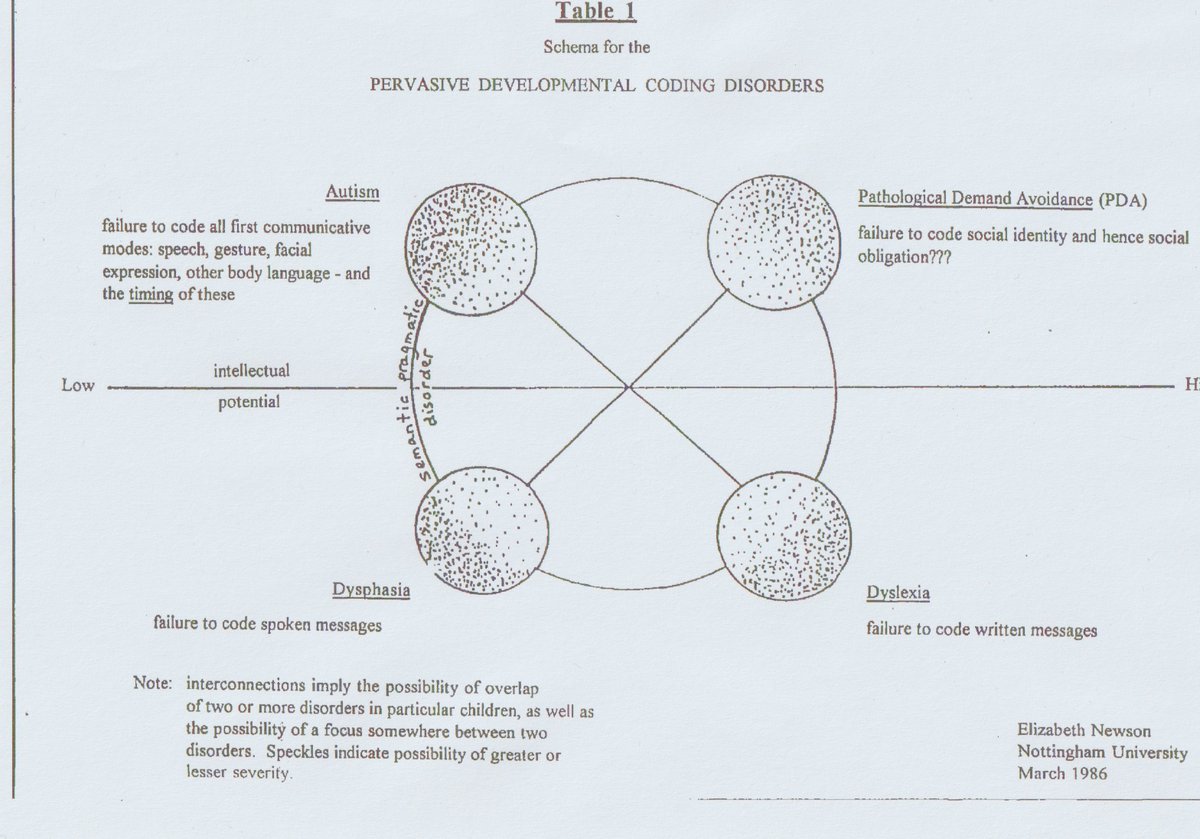
Which underlines my point, Newson seemed to have a broader interpretation of PDA, than Help4Psychology PDA definitions.
Autism history provides stark warning of placing too much emphasis on one clinic's views of autism; Look at the impact of Kanner's narrower conceptualisation of autism vs Asperger's. There are parallels to Help4Psychology & Newson's interpretations of PDA.
We also know from autism, that clinicians can have stereotypical views on any condition, especially how autism presents. I discuss this issue here, when asking if PDA solves the problem of steroetypical views of autism by clinicians:
…emandavoidancecom.files.wordpress.com/2020/08/01-aug…
…emandavoidancecom.files.wordpress.com/2020/08/01-aug…
Judy Eaton has a lower dx threshold for autistic females, indicating Help4Psychology does not have stereotypical views for autism.
researchgate.net/publication/33…
However, this does not mean the clinic does not hold stereotypical views on PDA.
researchgate.net/publication/33…
However, this does not mean the clinic does not hold stereotypical views on PDA.
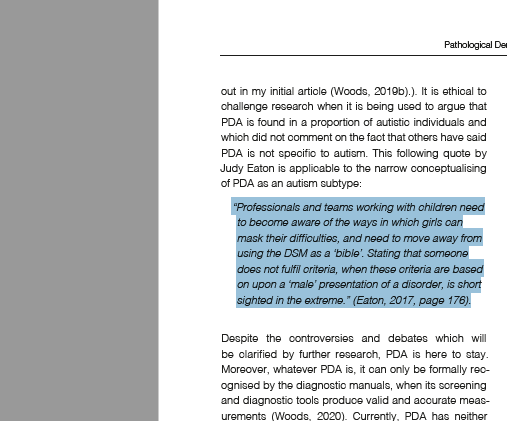
Must also point out that divergent opinions on PDA, to Help4Psychology are gaining empirical support. For one Wing et al (2011) & Garralda (2003) made certain observations that are being supported.
In the case of Wing et al (2011), Lorna Wing, Judy Gould & Chris Gillerg, might have seen similar numbers of persons with PDA to Judy Eaton, or considerably less. One would suspect Elena Garralda has seen substantially less persons with PDA than Judy Eaton.
PDA behaviours might not be caused by autism, by Wing et al (2011).
sciencedirect.com/science/articl…
sciencedirect.com/science/articl…
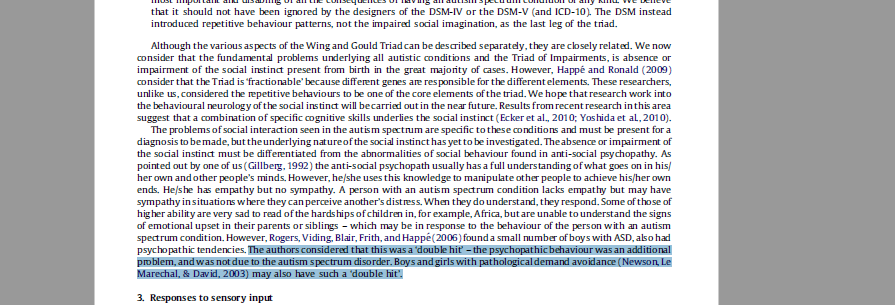
Supporting evidence.
sciencedirect.com/science/articl…
&
link.springer.com/article/10.100…
&
thelancet.com/journals/lanch…
&
ingentaconnect.com/contentone/bil…
sciencedirect.com/science/articl…
&
link.springer.com/article/10.100…
&
thelancet.com/journals/lanch…
&
ingentaconnect.com/contentone/bil…
It is possible to creation a selection bias, in ones PDA research if they take a narrow stereotypical view of what PDA is, especially when one considers Christopher Gillberg's views on PDA
thepsychologist.bps.org.uk/pda-new-type-d…
thepsychologist.bps.org.uk/pda-new-type-d…

The point here is that opinion that is different to that of Help4Psychology, by other respected clinicians, who may have substantially less experience with persons with PDA appears to be valid.
It means Help4Psychology clinicial experience is insufficient to dismiss it and use their own PDA definitions that contradicts much of the PDA literature & clinical opinion.
For this tweet I.
I discuss here
thepsychologist.bps.org.uk/pda-new-type-d…
Non-autistic persons with PDA have equal rights to a PDA diagnosis & research
ingentaconnect.com/contentone/bil…

https://twitter.com/Richard_Autism/status/1306609105067536385
I discuss here
thepsychologist.bps.org.uk/pda-new-type-d…
Non-autistic persons with PDA have equal rights to a PDA diagnosis & research
ingentaconnect.com/contentone/bil…
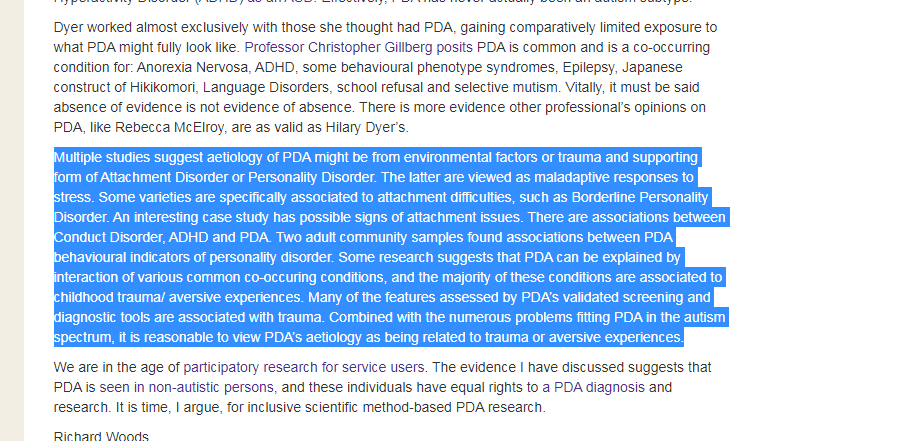
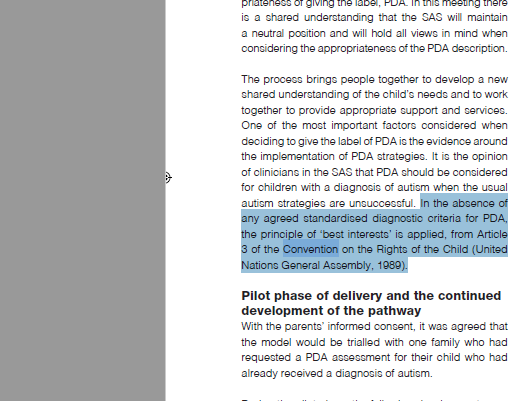
I think this thread shows many good reasons, indicating Help4Psychology PDA definitions are not representative of PDA literature, are stereotypical. While their clinical experience is insufficient to warrant using their definitions.
@threadreaderapp please could you unroll this? Ta in advance.
• • •
Missing some Tweet in this thread? You can try to
force a refresh

